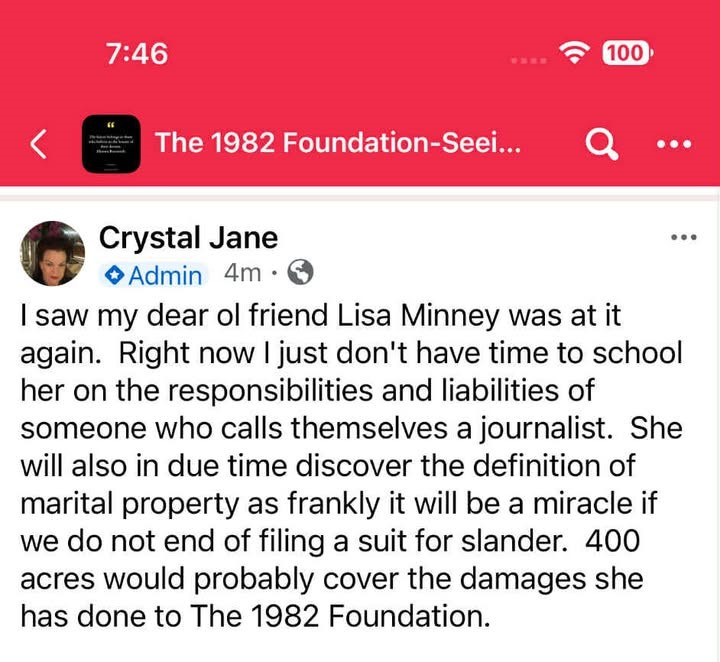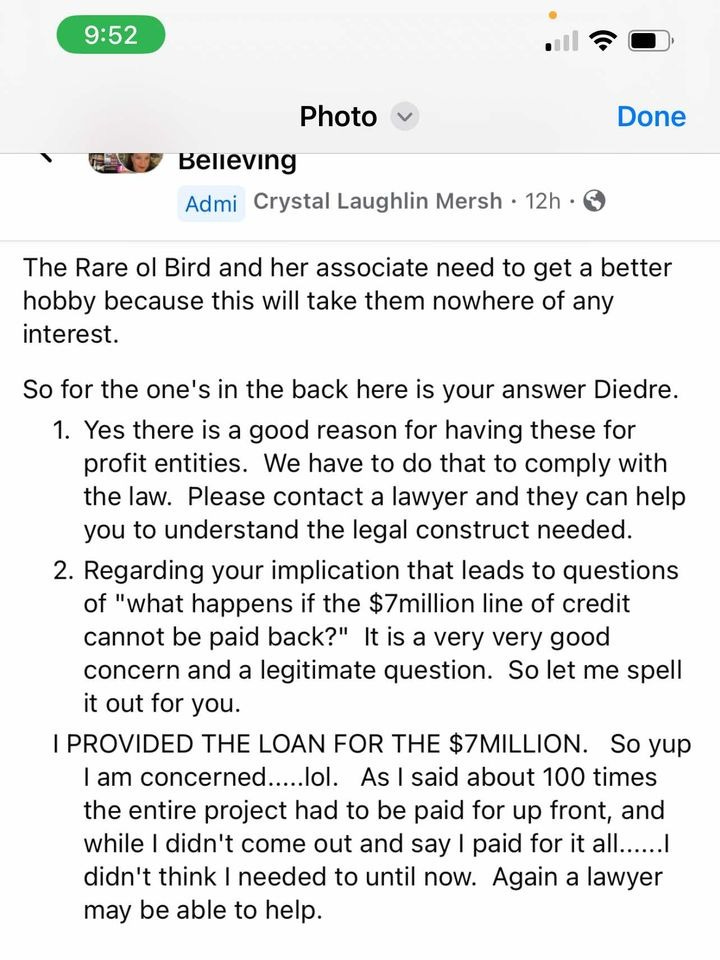How to Read What I Write
So you can tell where information came from, and often, how to access it yourself.
I don’t mean to insult anyone, but these days, it often seems like readers don’t quite understand the nuances of writing and documentation. So, before we move forward from here, I would like to present some basic concepts of news reporting. While I have already admitted that I have a strong opinion and bias when it comes to Mersh and her queendom, I want to ensure that readers understand how and where I come across the information I present.
Mersh has called me a “wreckless reporter,” a “lunatic,” and multiple other names. I could attempt to defend myself on the social media platform she abuses, but instead, I want to SHOW you how this actually works.
There are several ways researchers, reporters, scientists, and academics present “evidence” for the claims they make when they are writing. Ways that note the source, the supporting documentation, or the person who provided that information. Today, I would like to discuss direct quotes, ellipses, direct links to documentation, and photo documentation.
Direct Quotes
When information in writing is presented inside quotation marks, “like this,” that means the information has been pulled word-for-word from a document or an interview.
For example:
“Despite Viking’s work to move the Project forward and successful efforts to aid Owner in obtaining additional funding, Owner utilized the pay application process to remove the first $1,000,000 of additional funding from the Contract and, rather than pay for the overruns and the Change Orders already issued, used the funds to directly reimburse itself for non-construction expenses.”
This is a direct quote, word-for-word, from the civil complaint filed in Calhoun County by Viking Group against the defendants, The 1982 Foundation, Calhoun Community Center Landlord, LLC, and Crystal Mersh.
These are not MY words. I am not making this statement. The quotation marks are there to show credit to the source, to show, very clearly, that these are someone else’s words.
It is important to note that direct quotes may or may not be accurate. What IS accurate when they are presented in quotations is that the statements were made.
For example:
In August 2024, Mersh posted, “She is a political pot-stirrer working for Helmick and Pot-Hole Bob who are afraid to fight their own battles. She needs to keep her nose up on the farm before she loses her 400 inherited acres for libel and slander.”
Anyone can check public documents to see that I do not own this farm, my husband and I have not inherited this farm, and while this is a completely empty threat, it did upset the farm’s actual owner. These quoted statements are false.
(Added 6/1/25) But even so, after this post went live, she continued her threats:
As another example, not days after posting her first threat, she posted, “I HAVE BULLIED NO ONE.”
Again, clearly this is false.
(Screenshots of these only-for-friends posts are available upon request.)
Ellipsis
When you see three periods in a row (…) that is what is called an ellipsis. An ellipsis can be used in many ways, in my case here forward, for the intentional omission of text or numbers.
For example:
In a statement written and issued by Crystal Mersh, the August 2024 community workshop held on the Avalon campus was to “…outline a pathway by which our short fall in operating expense of $2 million can be covered.”
Here, the ellipsis is in place to show that the information inside the quotes is only PART of what was said or written. The ellipsis is there to show readers that only a portion of the statement is presented.
(I will also note here that grammatical errors or misspellings inside quotes belong to the source, not myself, and it is inappropriate to correct them. Here, for example, “shortfall” should be one word.)
Direct Links
When available online to the public, direct links provide readers with a connection to the source of the information.
For example:
In a September 2022 project update issued by Mersh, efforts have included “engineering drawings, part 2 of the historic submission, funding submissions and planning, interviewing contractors, and of course a large number of events.”
In this example (and the previous example), the text in blue (it might be another color if you’ve already visited the source) is a direct link to the source of the information provided inside the quotation marks. This enables readers to go to the source and review the information available there themselves.
It is also important to understand that if you are reading a screenshot of the text, or text that has been copy/pasted, oftentimes, those links will no longer work. It is also important to remember that those online sources can be easily changed, deleted, or adjusted, and thus may only be applicable on the day I accessed them.
Photo Documentation
When I don’t feel confident enough to translate or interpret documentation, or don’t have the inclination or enough time, I will simply present images of the documents.
For example, the pages of the Mechanics’ Lien recently filed:
You will note that the watermark on these documents states this is a “stolen copy.” What that means is the person who took screenshots of the documents did not request or pay the fees that accompany obtaining public records. This filing, for example, actually includes 8 pages — these three and a full description of the property the lien is covering.
Some organizations, understandably, charge for copies of public record documents. A typical charge would be 50 cents per page, but I have seen rates as high as $3 per page. To gain “official copies” without the obvious watermark, this document could cost up to $24. The civil suit that followed this lien filing was over 80 pages. Even at 50 cents a page, that’s forty bucks.
And, although other Mersh-minion-survivors might share these documents with me at no charge, these fees are an example of why I appreciate your support financially, but also emotionally and spiritually. Sharing all this comes at a price.
So, when you read, don’t just read. Take note of direct quotes, ellipses, direct links, and photo documentation.
One last example: If you look at the photos of the mechanic’s lien filed, you will see that there is already another lien holder on file for the property in question: CV Appalachian Investments 12, LLC — the entity that provided the $7.275 million loan. The loan is secured by all the real property of the 1982 Foundation, land, building, and all improvements according to the Credit Line Deed of Trust, which anyone can read at Calhoun Deed Book 303 at 131 in the Calhoun County Clerk’s office.
A loan, which, by the way, Crystal Mersh claims that she provided:
And, now you see how I came to consider her an “unreliable source.” Of course, dear reader, you can make your own decisions.







Gosh, how unpleasant to reread Crystal's bullying me, misspelling my name and lying in response to my questions. Well, turns out I was right, but doesn't make it more fun, as Lisa knows. A note - when quoted material contains a mistake, you can put "[sic]" after the mistake to show you are just copying what was in the original.